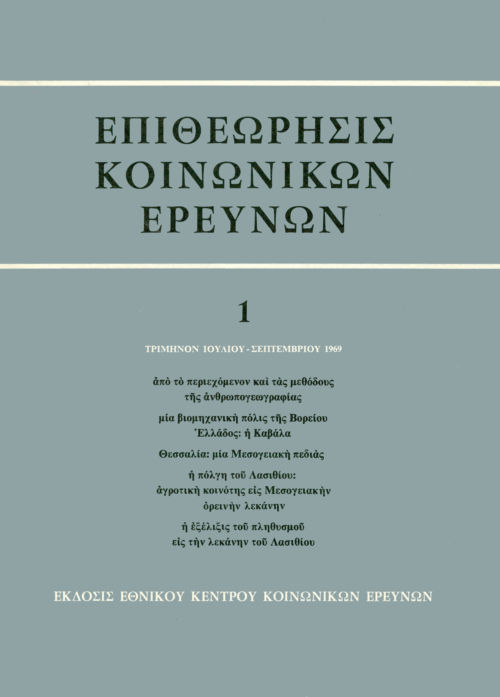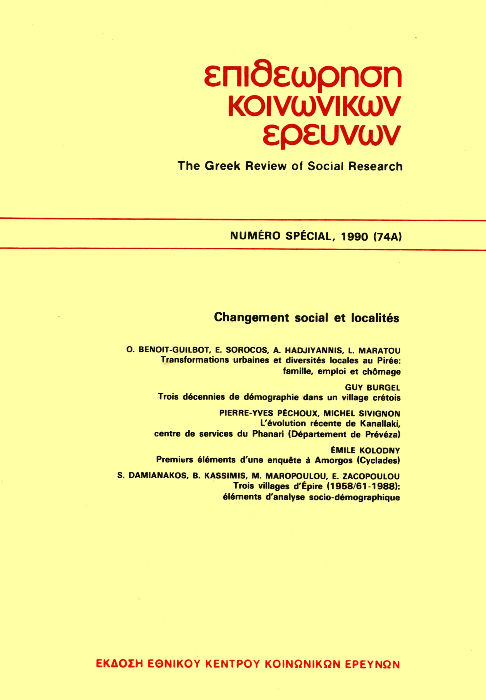Le poljé de Lassithi
Abstract
Ce petit bassin intra-montagnard de Crète orientale a longtemps
vécu dans l’isolement. Son désenclavement a sans
doute facilité l’émigration mais il a permis son insertion dans
les circuits de l’économie d’échanges: le recul des cultures
vivrières et de l’élevage des brèbis va de pair avec le développement
de cultures spéculatives. Cette transformation s’accompagne
d’une réadaptation des terroirs cultivés: les terrasses
des versants sont en voie d’abandon, l’effort se concentre
sur les terres irrigables du poljé lui même dont l’altitude
autorise la culture des pommes de terre, des pommiers et
des amandiers. Dans le même temps les villages du Lassithi
passent dans l’orbite d’Iraklion, capitale de la Crète.
Article Details
- How to Cite
-
Pechoux, P.-Y. (1969). Le poljé de Lassithi. The Greek Review of Social Research, 1, 40–50. https://doi.org/10.12681/grsr.522
- Issue
- 1969: 1
- Section
- Articles

This work is licensed under a Creative Commons Attribution-NonCommercial 4.0 International License.
Authors who publish with this journal agree to the following terms:
- Authors retain copyright and grant the journal right of first publication with the work simultaneously licensed under a Creative Commons Attribution Non-Commercial License that allows others to share the work with an acknowledgement of the work's authorship and initial publication in this journal.
- Authors are able to enter into separate, additional contractual arrangements for the non-exclusive distribution of the journal's published version of the work (e.g. post it to an institutional repository or publish it in a book), with an acknowledgement of its initial publication in this journal.
- Authors are permitted and encouraged to post their work online (preferably in institutional repositories or on their website) prior to and during the submission process, as it can lead to productive exchanges, as well as earlier and greater citation of published work (See The Effect of Open Access).




